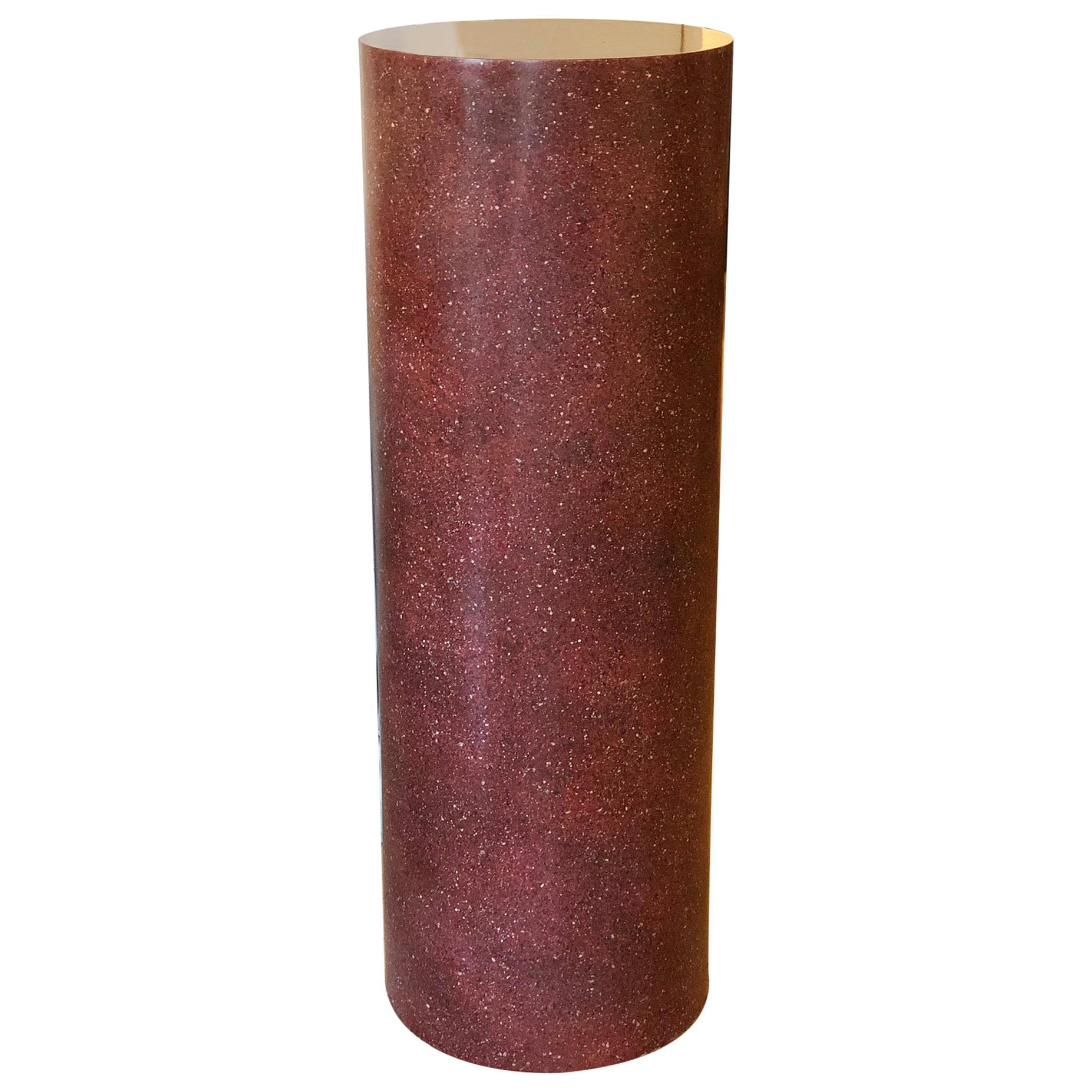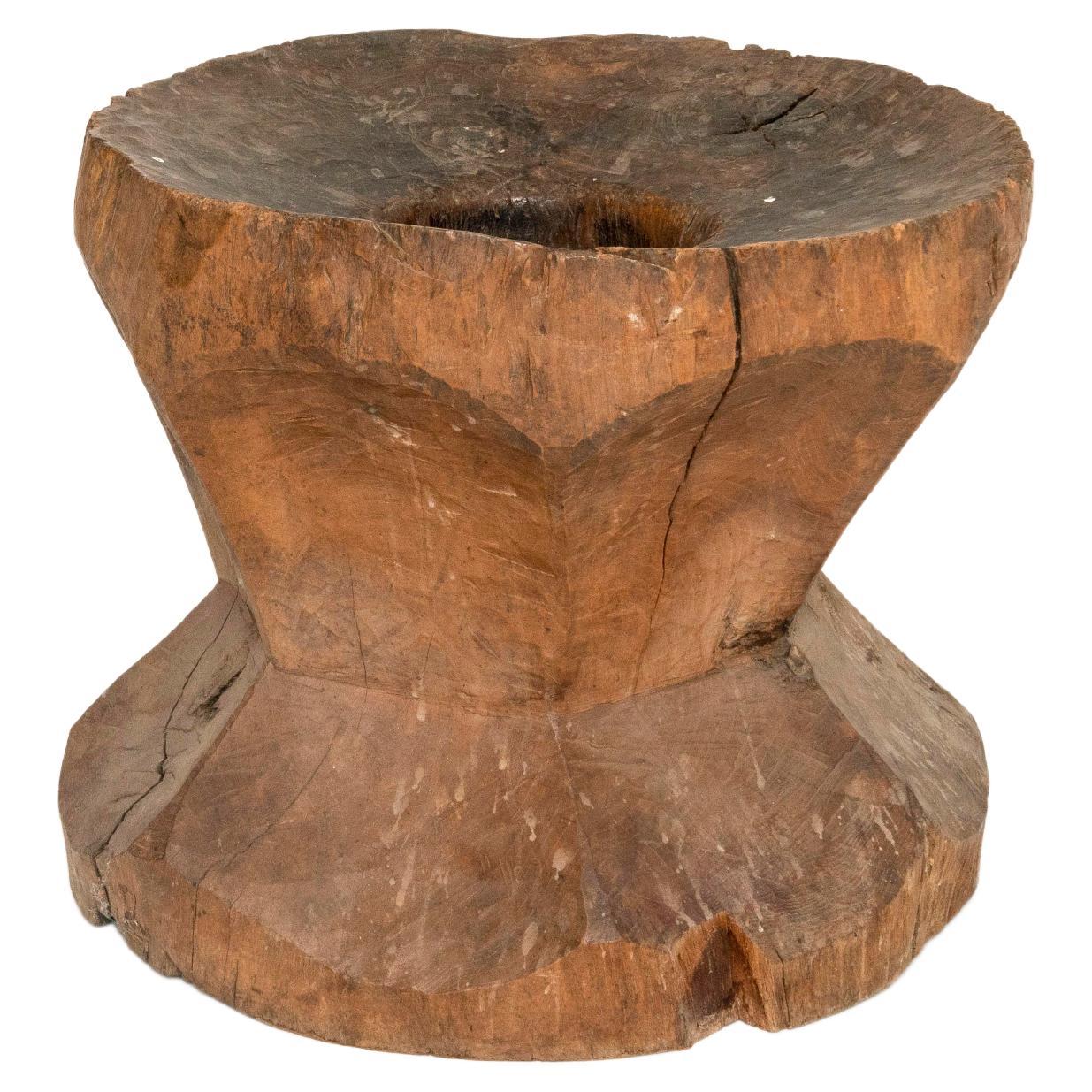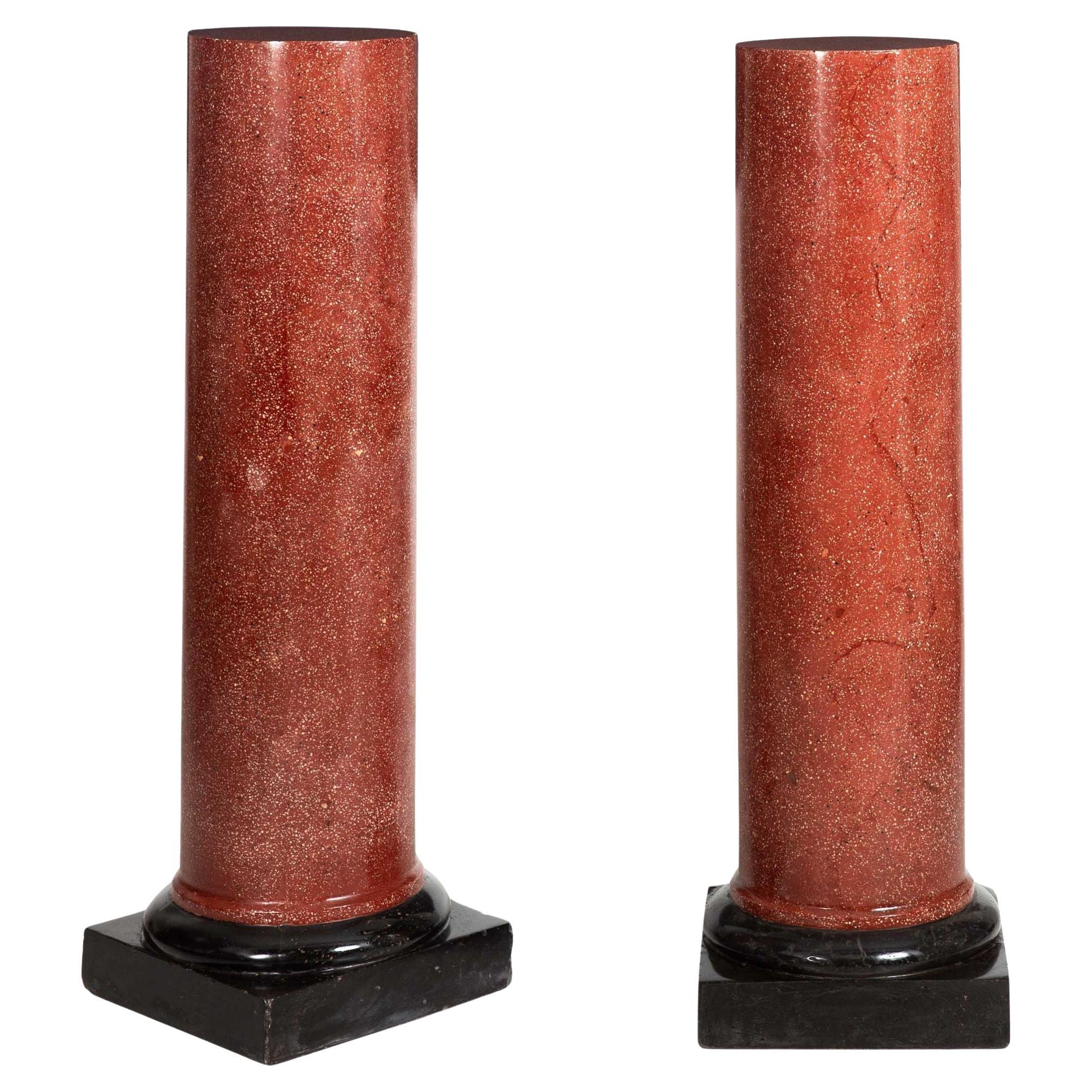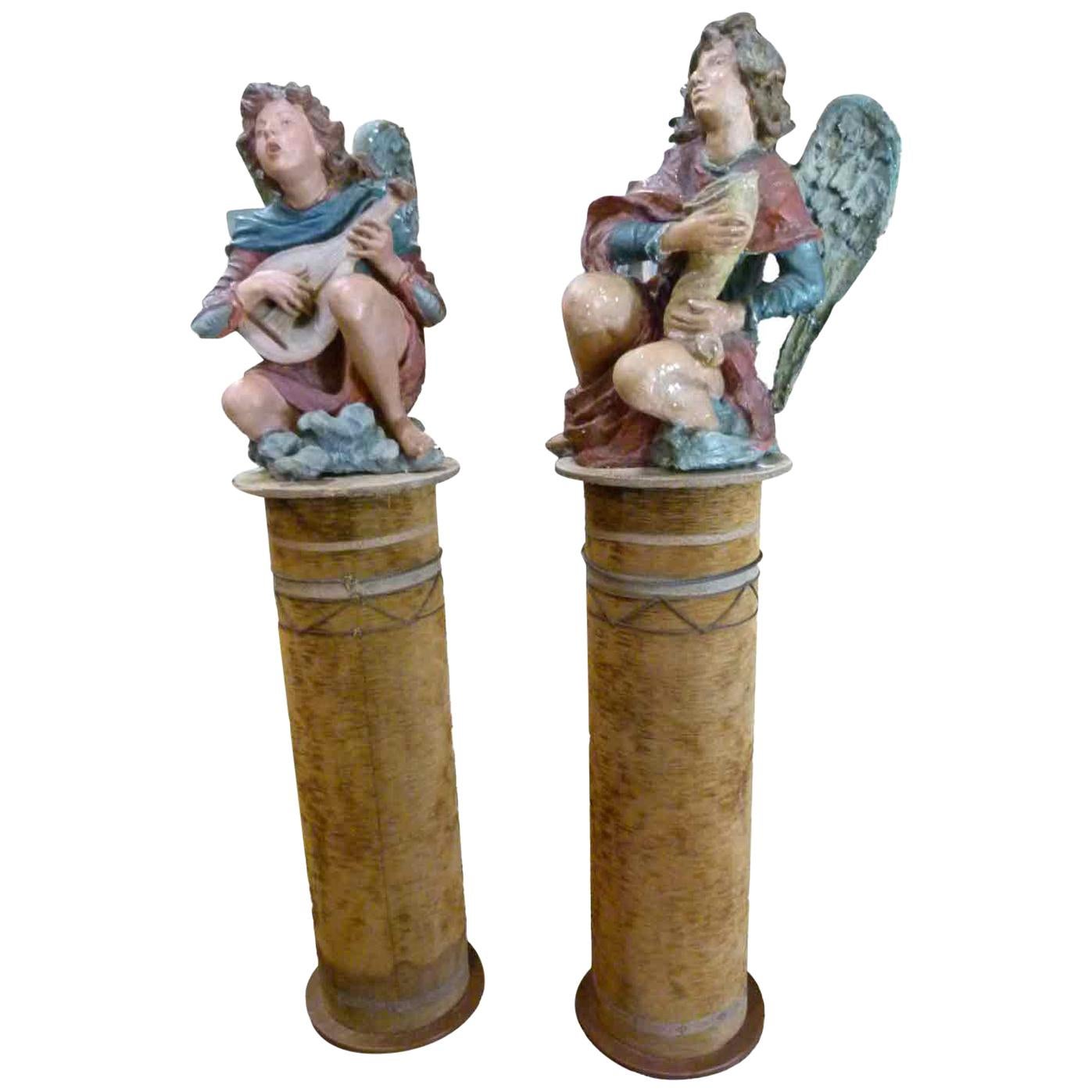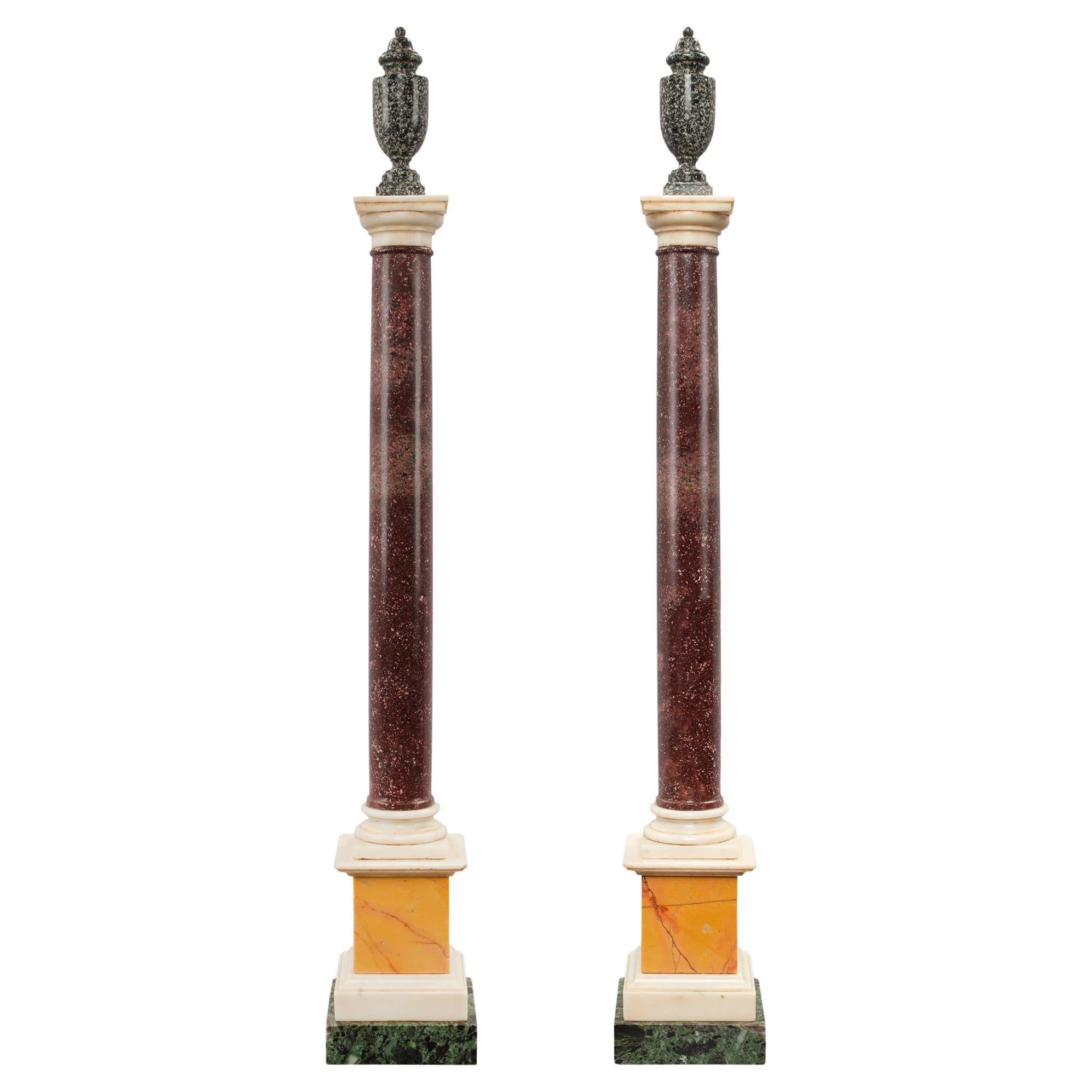Items Similar to Important Set of Four Large Porphyry Obelisks
Want more images or videos?
Request additional images or videos from the seller
1 of 11
Important Set of Four Large Porphyry Obelisks
About the Item
An important set of four large Porphyry Obelisks.
Each obelisk is of square section tapering form with a spiked orb finial and embellished with carved roundels of the twelve Roman Emperors in profile. The main body is raised on ball supports putdown on square sectioned plinth bases.
Each obelisk is carved with three Emperors profile medallions on a alabaster ground and the fourth medallion inscribed with the names and dates of the Emperors:
GALBA 68.69 OTHO 68.69 VITALLIUS G8.68,
VESPANISIANUS 69.79. TITUS 69.81. DOMITIANUS 81.96
IVULI 48.44 AVGVST 27.14 TIBERIVS 14.37.
CALIVULA 37.41. CLAUDIVS 41.54. NERO 54.68.
Italian, 20th Century.
Porphyry is a remarkably hard, durable rock, which in antiquity derived its name from the fact that its intense, dark red colour, speckled with white inclusions, is similar to the purple colour called purpura by the Romans. The name was extended by association to the massif where porphyry was quarried in Egypt, which the Romans called Mons Porphyrites.
The Romans began to quarry porphyry in the First Century BC, employing it in such large quantities that by the Fifth Century AD the quarries were nearly exhausted. It was used extensively for monumental elements, and it became invested with an Imperial symbolism, perhaps on account of its analogy with the purpura, which from ancient times had been seen as the perogative of regal dignity. The use of Porphyry was in fact limited by Diocletian to the Imperial family.
The Romans used this porphyry for the Pantheon's inlaid panels, for the togas in the sculpted portraiture of their emperors, and for the monolithic pillars of Baalbek's Temple of Heliopolis in Lebanon. Today there remain at least 134 porphyry columns in buildings around Rome, all reused from imperial times, and countless altars, basins and other objects.
Byzantium, too, was enamoured of porphyry. Constantine the Great celebrated the founding of his new capital, Constantinople (later Istanbul), in the year 330 by erecting there a 30-meter (100') pillar, built of seven porphyry drums, or cylinders, that still stands. Eight monolithic columns of porphyry support Hagia Sophia's exedrae, or semicircular niches. Justinian's chronicler, Procopius, called the columns "a meadow with its flowers in full bloom, surely to make a man marvel at the purple of some and at those on which the crimson glows."
Porphyry served the imperium in death as well as birth. Nero was the first emperor to be entombed in a porphyry sarcophagus, according to Suetonius. Constantine's porphyry sarcophagus has been lost, but that of his wife Constantia, decorated with peacocks, lambs, and grapes and thought to be a copy of his, is now in the collection of the Vatican Library. Those of the Holy Roman Emperors Frederick II, Henry IV and William I, and that of the Empress Constance, all porphyry, are in Sicily's Palermo and Monreale cathedrals.
In later centuries, porphyry columns and other pieces were widely reused in new constructions, often reappearing far from their original Roman context. In 786, Charlemagne received permission from Pope Hadrian to remove classical columns of porphyry from Rome to build his cathedral at Aachen.
This sacred and celebrative significance of Porphyry continued to be greatly appreciated in the Renaissance courts and it was to become a much sought after material by Sixteenth Century collectors. In Florence, Grand Duke Cosimo I, had a particular liking for this stone and sponsored its use in large-scale sculptural works. Given that the ability to execute large sculptural works in this arduous material had long since been lost, such works represented a remarkable technical accomplishment.
- Dimensions:Height: 76.78 in (195 cm)Width: 15.75 in (40 cm)Depth: 15.75 in (40 cm)
- Style:Neoclassical (In the Style Of)
- Materials and Techniques:
- Place of Origin:
- Period:
- Date of Manufacture:circa 1880
- Condition:Wear consistent with age and use.
- Seller Location:Brighton, GB
- Reference Number:
About the Seller
5.0
Recognized Seller
These prestigious sellers are industry leaders and represent the highest echelon for item quality and design.
Platinum Seller
These expertly vetted sellers are 1stDibs' most experienced sellers and are rated highest by our customers.
Established in 1964
1stDibs seller since 2014
48 sales on 1stDibs
Typical response time: 1 hour
Associations
The British Antique Dealers' AssociationLAPADA - The Association of Arts & Antiques Dealers
- ShippingRetrieving quote...Ships From: Brighton, United Kingdom
- Return PolicyA return for this item may be initiated within 7 days of delivery.
More From This SellerView All
- A Set of Four Large Porphyry Obelisks With Roundels of the Roman EmperorsLocated in Brighton, West SussexAn Important Set of Four Large Porphyry Obelisks. Each obelisk is of square section tapering form with a spiked orb finial and embellished with carved roundels of the twelve Roman...Category
20th Century Italian Neoclassical Obelisks
MaterialsMarble, Porphyry
- Large Pair of Acanthus Carved Giltwood StandsLocated in Brighton, West SussexA large pair of acanthus carved giltwood stands. Each stand has a circular dished top above an acanthus carved base with trailing bell husks a...Category
Antique 19th Century French Rococo Revival Pedestals and Columns
MaterialsGiltwood
- A Large Pair of Parcel-Gilt and Grey Painted PedestalsLocated in Brighton, West SussexA Large Pair of Parcel-Gilt and Grey Painted Pedestals. Each pedestal is of square tapering section inset with an Escalette Alpha rose marble top and carved overall with scrollwork,...Category
Antique 19th Century French Pedestals and Columns
MaterialsMarble
- Pair of Giltwood and Gesso PedestalsBy Robert AdamLocated in Brighton, West SussexA pair of giltwood and Gesso pedestals, in the manner of Robert Adam. Each pedestal having a circular top with a waisted fluted socle, on ram's-mask headed acanthus-carved fluted monopodia, raised on a tiform-plinth with lion's paw feet. This neoclassical design is modelled after the antique Greek tripod...Category
Antique 19th Century English Neoclassical Pedestals and Columns
MaterialsGesso, Giltwood
- Pair of Green Breccia and Carrara Marble PedestalsLocated in Brighton, West SussexA Pair of Green Breccia and carrara Marble Pedestals Each has a square top with stepped pediment of fine white carrara marble. The column of unusual green breccia marble stands at...Category
Antique Early 19th Century French Neoclassical Pedestals and Columns
MaterialsBreccia Marble, Carrara Marble
- Pair of Renaissance Revival Oak PedestalsLocated in Brighton, West SussexA finely carved pair of Renaissance Revival oak pedestals. Each pedestal features a finely carved lions mask to each side supporting wrought iron ring handles. Possibly Ameri...Category
Antique 19th Century American Renaissance Revival Pedestals and Columns
MaterialsOak
You May Also Like
- Faux Porphyry PedestalLocated in New York, NYFaux Porphyry pedestal Contemporary Available as custom order. 1958C.Category
21st Century and Contemporary American Neoclassical Pedestals and Columns
MaterialsWood
- Large Decorative Antique Mortar of WoodLocated in Hellouw, NLDecorative large antique mortar of wood. This robust item is great to add some warmth and texture to your interior. It can be used in combination with c...Category
Early 20th Century European Other Pedestals and Columns
MaterialsWood
- Pair of Neoclassical Simulated Porphyry Scagliola Pedestal ColumnsLocated in Shippensburg, PAPAIR OF NEOCLASSICAL SIMULATED-PORPHYRY SCAGLIOLA PEDESTAL COLUMNS Probably Italian, circa late 19th century Item # 403HRY18X This fine pair of Neoclassical columns are exquisite ex...Category
Antique 19th Century European Neoclassical Pedestals and Columns
MaterialsScagliola
- Polychromed terracotta pair of AngelsLocated in Vulpellac, Girona19th Century polychromed terracotta pair of Angels. The pedestals shown in the photos are not included. Measurements: Angels figure: 69 cm (23,6...Category
Antique Early 19th Century Spanish Neoclassical Figurative Sculptures
MaterialsTerracotta, Wood
- Alabaster Bust of Judith with Marble Column After August Riedel PaintingLocated in Guaynabo, PRThis is a heavy alabaster bust sculpture of Judith after the painting of August Riedel. It depicts the bust of a light brown wavy hair female who is wear...Category
Mid-20th Century Unknown Neoclassical Busts
MaterialsAlabaster, Marble
- Pair of Italian 19th Century Neoclassical Style Marble and Porphyry ColumnsLocated in West Palm Beach, FLA sensational and extremely decorative pair of Italian 19th century Neo-Classical st. marble and porphyry columns. Each column has a square Vert Antico base below the mottled white Carrara and Sienna marble plinth. Each central solid red porphyry column is decorated by a white Carrara marble circular mottled base and capital. At the top of each column is an elegant ornamental green porphyr urn. Porphyry was Imperial Rome’s most prestigious stone for columns, vases, and other objects. The word “porphyry” comes from the Latin word for purple, which was the color of nobility to the Romans. Porphyry is considered the Imperial Stone of the Roman Empire. In the year 18 AD, the Roman Legionaire Caius Cominius discovered a beautiful purple stone in the eastern desert of Egypt. It was a deep purple color with flecks of larger white crystals and was perfect for carving. This porphyry quickly became the most prestigious stone for the elite of Rome and Byzantium. For centuries the Romans quarried this treasured stone...Category
Antique 19th Century Italian Neoclassical Pedestals and Columns
MaterialsMarble
